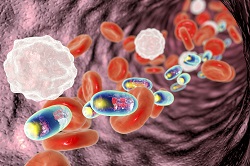Nanomedicine – innovative ways of treating challenging conditions
Nanomedicine, the application of nanotechnology to health, raises high expectations for millions of patients hoping for better, more efficient and affordable treatment. The debilitating diseases mentioned above are a challenge to people’s quality of life: they are also a challenge to our healthcare systems as rising patient costs puts them under ever-increasing pressure. While the proportion of working age people in the EU is shrinking, the relative number of those retired is growing, so questions arise regarding how to pay for long term care Nanomedicine has the potential to provide personalised, yet more affordable, healthcare while at the same time offering improved quality of life for the sick and injured. From drug delivery targeted to specific cells, to regenerative medicine for patients with organ failure or severe injury, nanomedicine opens up numerous potential pathways to improving medical diagnosis and therapy.
A strategic issue for the competitive position of the EU’s healthcare industry
From 2007-2010, the Industrial Technologies programme, as part of the EU’s Seventh Framework Programme for research, invested about EUR 265 million in nanomedicine related research projects. The funding supported areas such as the development of targeted nanopharmaceuticals and nanodiagnostics technologies; biomaterials for implants and regenerative medicine; and the development of intelligent prostheses with neural interfaces, providing sensing and actuated by brain activity. Horizon 2020, (which has EUR 80 billion of funding available from 2014 – 2020), is building on those results with a focus on nanomedicine translation – helping innovation make it out of the lab and into healthcare provision. To help translate research into treatment, collaboration with industry is closer than ever. The private sector has increasing interest in stepping into the area of nanomedicine; the expected market share of final products is expected to be significant. In addition to the improved quality of health care, the creation of new jobs can be expected. The EU has also established The European Technology Platform for Nanomedicine(opens in new window). This is an industry-led forum that provides input on the research priorities to be addressed and gives advice on innovation related policy for the nanomedicine field. Its members are European organisations that are actively researching the field of nanomedicine and working together to define research priorities and identify how best to get the results of research to patients.
EU projects leading the field
This Results Pack showcases 10 projects whose research is opening doors to new opportunities for patients, as well as fostering the vital contacts between researchers, industry and financial intuitions to take these technologies further. Finding ways to overcome problems thrown up as part of laboratory experiments can be the challenge researchers most enjoy. Overcoming problems outside the lab, such as trying to get their nanomedicine through regulatory systems and onto the market, can be more intimidating than stimulating. ENATRANS, with its focus on translation, succeeded in creating a network of support to SMEs, created as research spin-offs, by offering them expert advice on issues such as intellectual property, business models and funding strategies. Cancer cells are hard to treat: their microenvironment is complex and the blood vessels treating them are abnormal. EU funding through NeoNaNo project helped to develop tumour-targeted combination therapies. The first in-human, clinical trial to look at their area of research is being conducted at the Centre for Clinical and Translational Research in Aachen, Germany. Antibiotic resistance, potentially one of the biggest medical crises we currently face, could be around the corner. The FORMAMP project has harnessed nanotechnology to develop new delivery systems and antimicrobial peptides (AMPs), to put forward new tools in the fight against infectious diseases.



